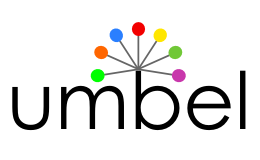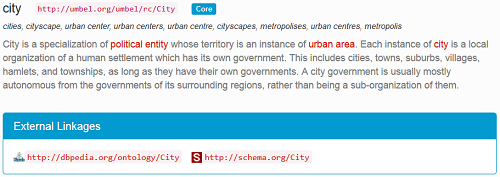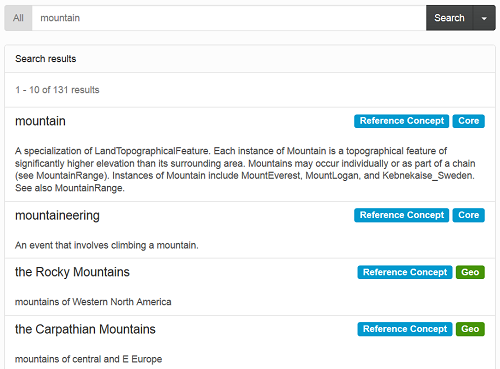| Structured Dynamics is happy to announce the immediate availability of the Open Semantic Framework version 3.2. This is the second important OSF release in a month and a half. |  |
This new major release of OSF changes the way the web services communicate with the triple store. Originally, OSF web services were using a ODBC channel to communicate with the triple store (Virtuoso). This new release uses the SPARQL HTTP endpoints of the triple store to send queries to it. This is the only changes that occurs in this new version, but as you will see bellow, this is a major one.
Why switching to HTTP?
The problem with using ODBC as the primary communication channel between the OSF web services and the triple store is that it was adding a lot of complexity into OSF. Because the UnixODBC drivers that are shipped with Ubuntu had issues with Virtuoso, we had to use the iODBC drivers to make sure that everything was working properly. This situation forced us to recompile PHP5 such that it uses iODBC instead of UnixODBC as the ODBC drivers for PHP5.
This was greatly complexifying the deployment of OSF since we couldn’t use the default PHP5 packages that shipped with Ubuntu, but had to maintain our own ones that were working with iODBC.
The side effect of this is that system administrators couldn’t upgrade their Ubuntu instances normally since PHP5 needed to be upgraded using particular packages created for that purpose.
Now that OSF doesn’t use ODBC to communicate with the triple store, all this complexity goes away since no special handling is now required. All of the default Ubuntu packages can be used like system administrators normally do.
With this new version, the installation and deployment of a OSF instance has been greatly simplified.
Supports New Triple Stores
Another problem with using ODBC is that it was limiting the number of different triple stores that could be used for operating OSF. In fact, people could only use Virtuoso with their OSF instance.
This new release opens new opportunities. OSF still ships with Virtuoso Open Source as its default triple store, however any triple store that has the following characteristics could replace Virtuoso in OSF:
- It has a SPARQL HTTP endpoint
- It supports SPARQL 1.1 and SPARQL Update 1.1
- It supports SPARQL Update queries that can be sent to the SPARQL HTTP endpoint
- It supports the SPARQL 1.1 Query Results JSON Format
- It supports the SPARQL 1.1 Graph Store HTTP Protocol via a HTTP endpoint (optional, only required by the Datasets Management Tool)
Deploying a new OSF 3.2 Server
Using the OSF Installer
OSF 3.2 can easily be deployed on a Ubuntu 14.04 LTS server using the osf-installer application. It can easily be done by executing the following commands in your terminal:
[cc lang=”bash”]
[raw]
mkdir -p /usr/share/osf-installer/
cd /usr/share/osf-installer/
wget https://raw.github.com/structureddynamics/Open-Semantic-Framework-Installer/3.2/install.sh
chmod 755 install.sh
./install.sh
./osf-installer –install-osf -v
[/raw]
[/cc]
Using a Amazon AMI
If you are an Amazon AWS user, you also have access to a free AMI that you can use to create your own OSF instance. The full documentation for using the OSF AMI is available here.
Upgrading Existing Installations
It is not possible to automatically upgrade previous versions of OSF to OSF 3.2. It is possible to upgrade a older instance of OSF to OSF version 3.2, but only manually. If you have this requirement, just let me know and I will write about the upgrade steps that are required to upgrade these instances to OSF version 3.2.
Security
Now that the triple store’s SPARQL HTTP endpoint requires it to be enabled with SPARQL Update rights, it is more important than ever to make sure that the SPARQL HTTP endpoint of the triple store is only available to the OSF web services.
This can be done by properly configuring your firewall or proxy such that only local traffic, or traffic coming from the OSF web service processes, can reach the endpoint.
The SPARQL endpoint that should be exposed to the outside World is OSF’s SPARQL endpoint, which adds an authentication layer above the triple store’s endpoint, and restricts potentially armful SPARQL queries.
Conclusion
This new version of the Open Semantic Framework greatly simplifies its deployment and its maintenance. It also enables other triple stores that exist on the market to be used for OSF instead of Virtuoso Open Source.



